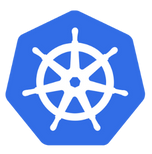For a company that decides to build or revise its own Data Strategy, it is essential to dedicate time to reflecting on the motivations that should guide the new strategy, which key processes will be impacted, how to adapt its technology stack to a new architecture, and which use cases to identify in order to test the new approach to data.
Over the years, Quantyca has gained extensive experience in guiding and advising its clients in defining and adopting a new Data Strategy (which has become increasingly dynamic and global over the years) and has collected the lessons learned and best practices in a process proposed to its clients as part of designing a Data Strategy that is articulated in four phases:
- Assessment
- Foundation
- Mobility
- Execution
The assessment phase is a planning process for the new Data Strategy, done collaboratively with the client. As cloud-native use cases or migrations to the cloud increase, managing environments and security becomes more challenging. It becomes essential to have a tool capable of effectively distributing and controlling corporate policies.
The Cloud Foundation represents a set of configurations, templates, and automations designed to manage connectivity, identities, and security of cloud environments and always keep costs under control.























